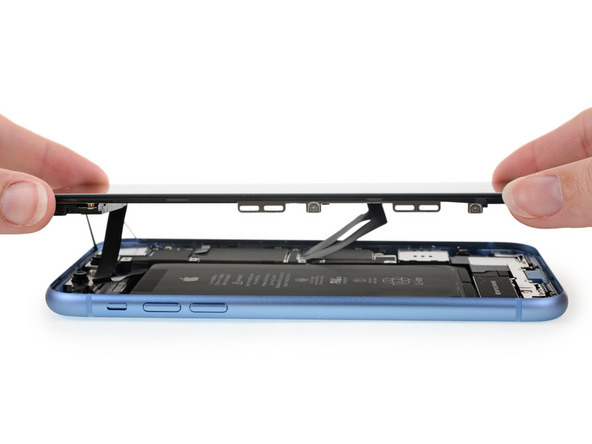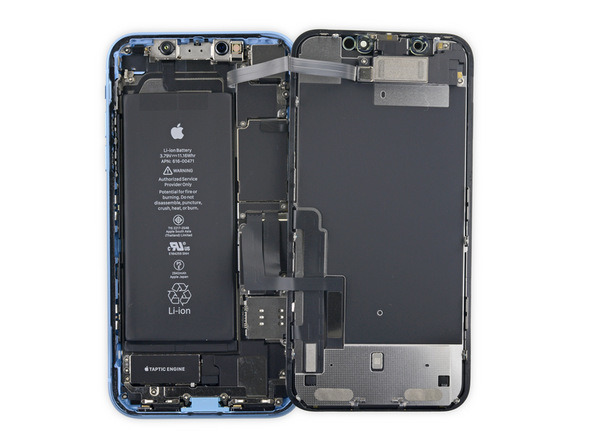As might be expected, one of the first teardowns of Apple's iPhone XR shows few obvious differences with the XS apart from screen size and having a single rear camera instead of two.
The XR is missing the XS's antenna band and symmetrical grills, repair outfit iFixit did note on Friday. Bezels on the XR are also slightly larger, and the SIM slot is moved towards the bottom of the device.
The interior is described as a "fun hybrid between the 8 and the X," with both a rectangular battery and rectangular logic board.
iFixit is still in the middle of its teardown, but noted that opening an XR is similar to the XS, and that each device has a gap above the battery for a display-mounted earpiece speaker.
The phones share A12 processors, edge-to-edge displays, and TrueDepth cameras for Face ID and animoji. The XR uses a 6.1-inch LCD instead of OLED however, lacks 3D Touch, and has less RAM. The extra camera on the XS gives it access to 2x optical zoom, better depth data, and more Portrait options.
The XR launched on Friday to short or non-existent retail lineups, but that may be because of online orders, carrier-based upgrades, and/or early adopters favoring the XS.
Update: iFixit has completed its teardown of Apple's iPhone XR, assigning the device a repairability score of 6 out of 10.
 Roger Fingas
Roger Fingas









 William Gallagher
William Gallagher
 Andrew Orr
Andrew Orr
 Malcolm Owen
Malcolm Owen


 Wesley Hilliard
Wesley Hilliard





-m.jpg)




6 Comments
This confirms what we knew: The fundamentals of the Xr & Xs are the same. The differences are in the more superficial stuff like the screen and camera*. So, it makes the choice fairly easy: Do you want to pay extra for a higher performance screen and camera? It is seldom that consumers get such a clear cut distinction between tech products.
Given as many of us suspected and is now confirmed, that they're essential the same under the hood, I'd like to know why Apple made the XR bigger than the XS.
So they could have a 'medium'? Bridge the gap between the XS and XS Max? Skew purchases of those wanting a 'smaller' phone to the pricier XS?
Granted, it's not much of a difference, but every little bit helps, as far as I'm concerned.
Little difference except dual board assembly and L shaped battery. Both must add to build cost.